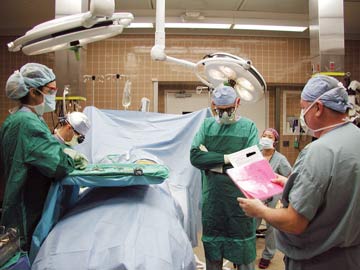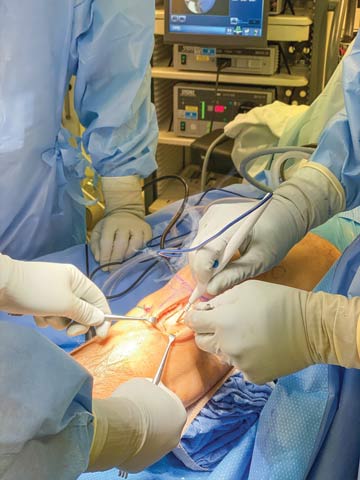At the heart of electrosurgery safety is a firm understanding of how the technology works and the core principles driving its use. A base knowledge of the physics behind the mechanics will lead to fewer injuries caused by electrocautery mishaps, says David Renton, MD, MPH, an associate professor of general surgery at The Ohio State University Wexner Medical Center in Columbus.
"The more you know about electrosurgery technology, the safer you are," adds Dr. Renton, "As I tell my surgical residents, 'You have to know how it all works — the settings, electricity distribution, voltage, arcing. Everything.'"
Unfortunately, there's a knowledge gap when it comes to arming new surgeons with a solid understanding of how electrosurgery works.
"In medical school, we have pharmacology courses that teach students how drugs work, their metabolism, what their mechanism is," says Thomas Robinson, MD, MS, FACS, a professor of surgery at the University of Colorado School of Medicine in Aurora, and the committee chair of the Society of American Gastrointestinal and Endoscopic Surgeons' FUSE (Fundamental Use of Surgical Energy) program. "But there's no formal education or training on electrosurgical technology and devices."
Surgeons can learn the basics from electrosurgery equipment vendors, which in certain cases is useful and adequate, but the line between education and marketing can get blurred. That's why a program like FUSE (see "Training for the Entire Team") — an educational platform geared toward providing the knowledge needed for the safe use of energy-based surgical devices in the OR, endoscopic suite or other procedure areas — is so beneficial. Dr. Robinson says FUSE's top priority is "to fill the gap in knowledge within the surgical community by informing and teaching how the technology works, so professionals fully understand the strategies they can use in the OR to safely use electrosurgery instruments."
Dr. Renton puts the program's value a bit more bluntly. "Years ago, most surgeons' understanding of electrosurgery was, 'You press this button, and this end burns things.'"
Thankfully, times have changed. So have the expectations you should have about ensuring surgeons focus on patient safety when they cut, coagulate and ablate.
.svg?sfvrsn=be606e78_3)


.svg?sfvrsn=56b2f850_5)